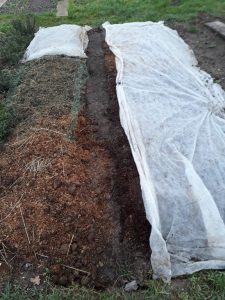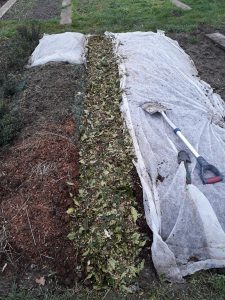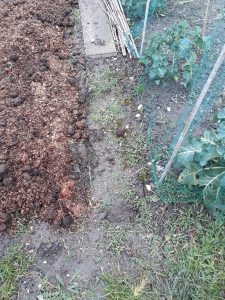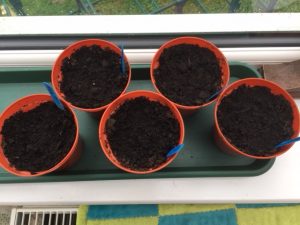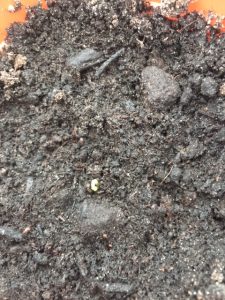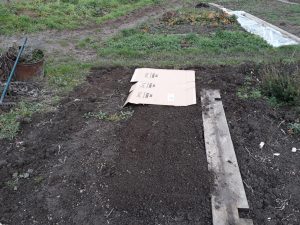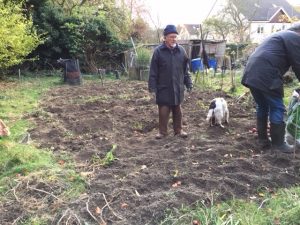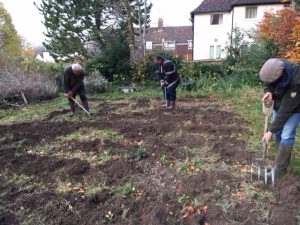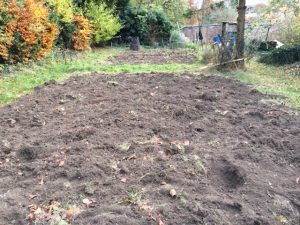There hasn’t been too much going on down the allotment for the last couple of months …… even been too cold for weeds and just a bit too wet to work!
In the meantime I have been puzzling over no-dig potatoes. How does that work? My initial solution was to avoid the problem by not growing potatoes this year. However the gardening fraternity are a generous lot and by April I had been asked to grow a row of spuds for a friend.
Up in Weston, the farmers also use no-dig but on a far larger scale. As it happens they are trialling no-dig potatoes this season, so of course I wanted to know how they went about it.
Translated into allotment terms, we start with some levelled ground and place our chitted potatoes on the surface at the usual spacing.

Next comes a layer of manure or compost or both.

On top of this is a layer of straw. This will benefit from a good soaking once it’s in place.

The top layer is grass cuttings – obviously not from grass treated for weeds & moss & such like ! The grass will rot down, and whilst its doing that, it stops the straw blowing about. Thinking ahead to pigeons etc. picking through all those layers, I covered the whole lot with some pea-netting.

Apparently this method will produce potatoes that are a better shape and more regular sized that traditional cultivation. It also avoids stabbing your crop with the garden fork, because you don’t dig them up to harvest and should mean that rogue tubers don’t get left behind in the soil.
We shall see!
Annie
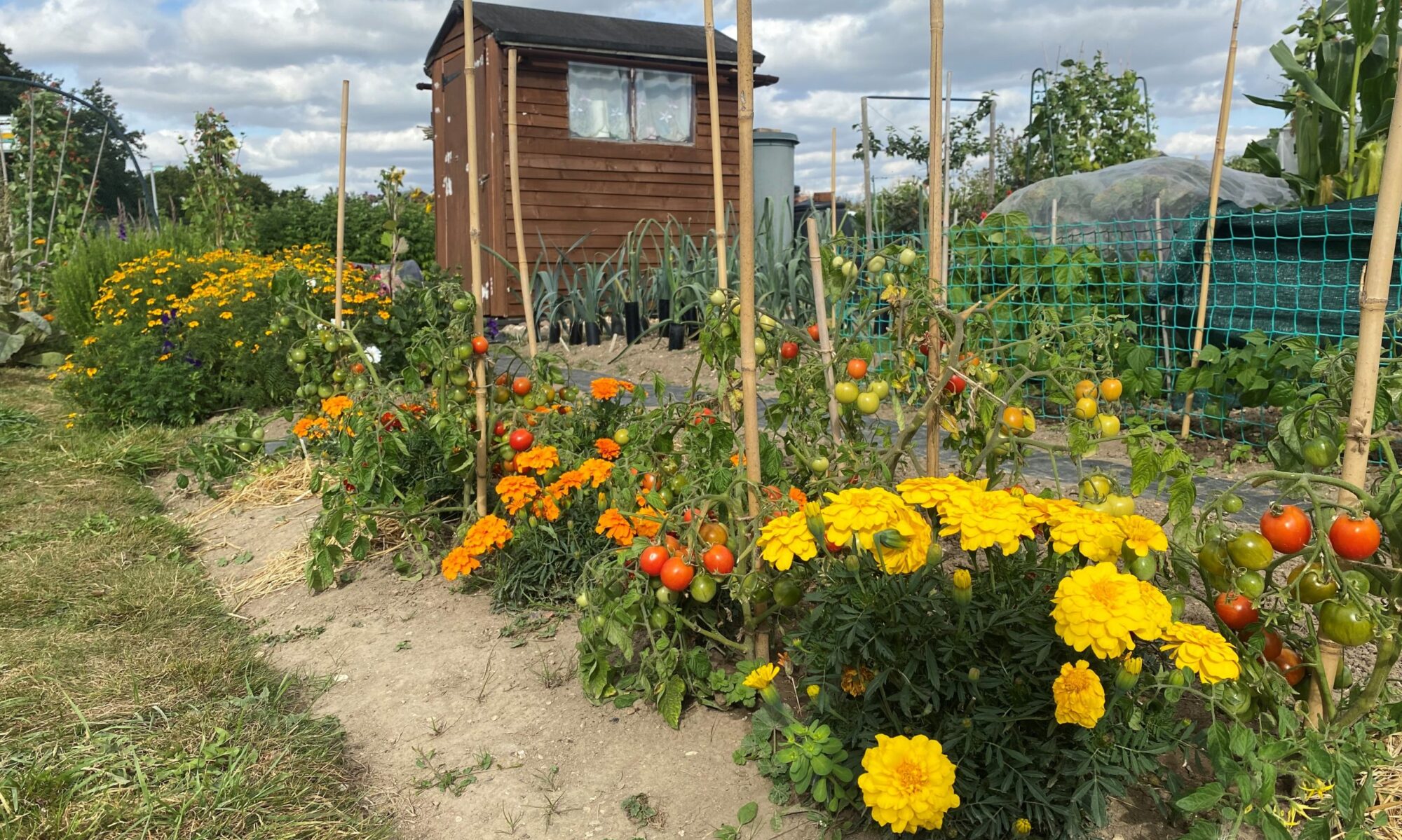

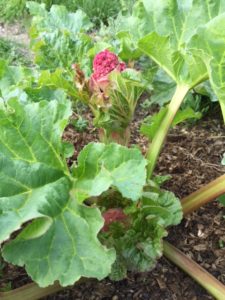



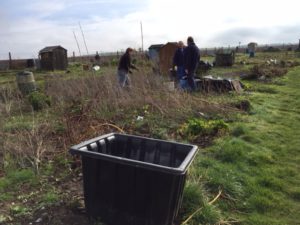
 Clearing rubbish from vacant plots
Clearing rubbish from vacant plots


